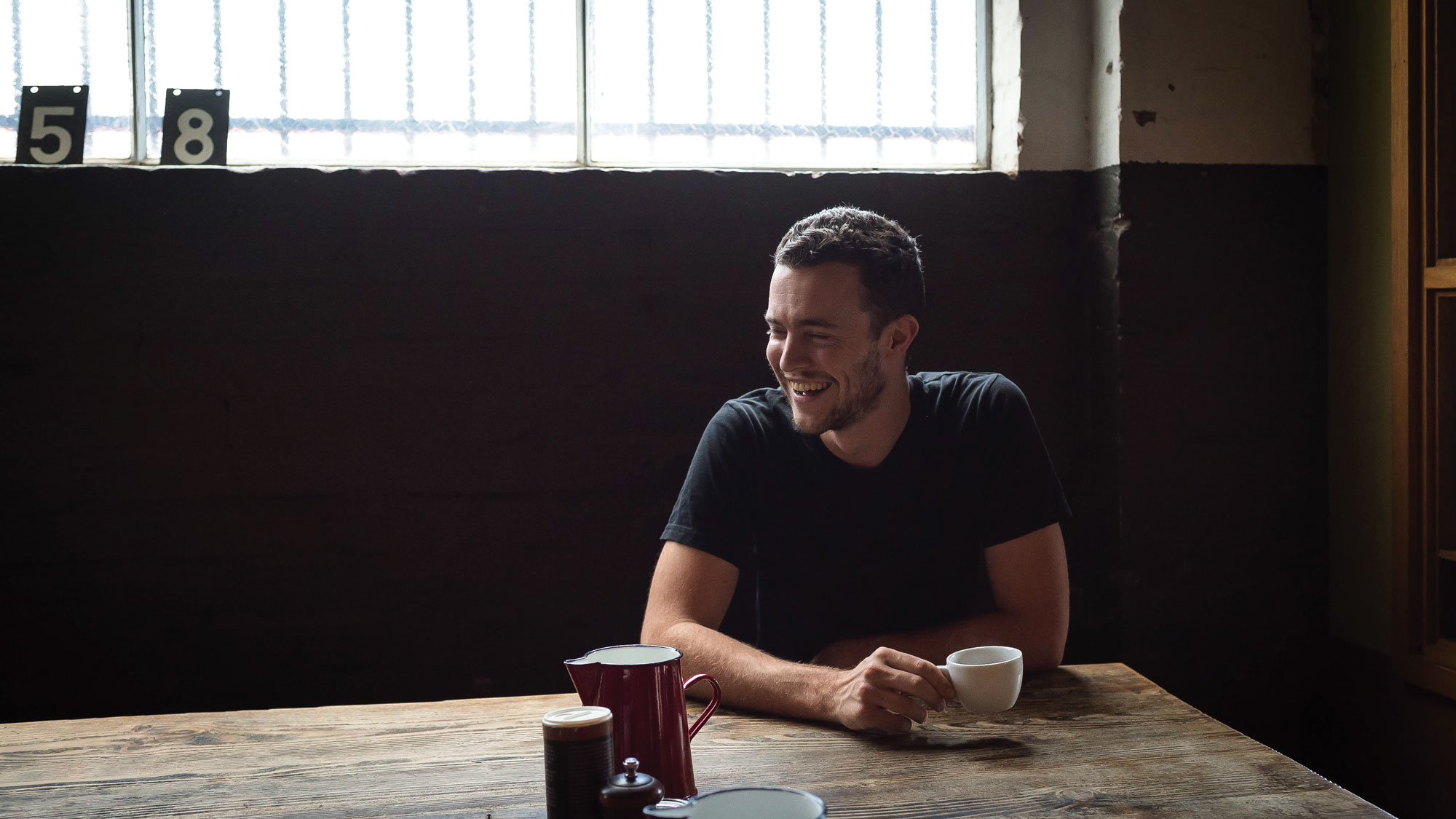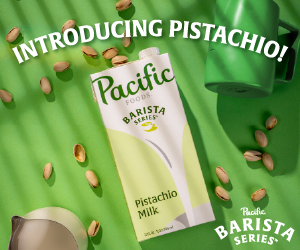[C]an specialty coffee be automated? Or perhaps the better question is, should specialty coffee be automated? Faced with rising operation costs and razor-thin margins, some coffee professionals are proposing that automation can help lower labor costs while increasing consistency. But many remain skeptical, maintaining that high-end coffee is incompatible with a convenience-oriented service model.
“Automatic machines can be worse than baristas, but they also have the potential to be much, much better,” says Matt Perger, founder of Barista Hustle and 2012 World Brewers Cup champion. Perger has been a public advocate for automatic espresso machines, also called “super autos,” since speaking at La Marzocco’s Out of the Box event in 2015. “The reactions ranged from surprise to full-on anger,” says Perger.
Third-wave coffee shops, after all, rose to prominence with an emphasis on manual brew methods by the cup and paddle espresso machines, which require baristas to manually start and stop each shot. Although pour-overs remain a fixture in many specialty coffee shop menus, the pendulum has swung decidedly in the other direction. Baristas have discovered anew that automated batch brewers are every bit as capable to brew a well-extracted cup—with greater reproducibility and efficiency to boot.
With a renewed affirmation of the benefits of automating large batches of filter coffee, perhaps it shouldn’t come as a surprise that automation advocates have turned their sights to espresso. In many cafés, paddle espresso machines have given way to volumetric and even gravimetric machines. On the tamping front, devices such as the Puqpress and the PUSH tamper have attempted to eliminate errors during tamping. But some want to automate espresso even further.
Long the exclusive domain of fast-food chains and convenience stores, super automatic espresso machines are being embraced by a growing number of specialty coffee experts.
“I have certainly had better shots from super automatic machines, than I have had at many cafés,” says Marcos Iglesias, an account manager at Brooklyn-based coffee roastery Parlor Coffee. “I would venture to say that a properly programmed and maintained super auto can yield a higher quality cup of coffee than the average barista can in a busy café setting.”
Automatic espresso machines automate the grinding, distributing, tamping, and brewing process, reducing the task of the barista to pushing a button. Some models even automate steaming the milk.
Iglesias previously worked as an espresso machine technician, a job that had him service super automatic espresso machines over a three-state area. Although the quality of coffee prepared by these machines was poor, he was impressed by the technology.
“Super autos have a bad reputation because of their place in the industry and because of the technology implemented in them in the past,” says Iglesias. “Usually super autos are seen by people as an option for those who want simple and labor-free coffee. This usually means they get put in fast-paced restaurants or cafés, offices, twenty-four-seven establishments and other settings along that same vein. These places generally don’t know how to program or maintain these pieces of machinery and additionally tend to use bad quality coffee.”
As with manual and semi-automatic espresso machines, super automatic machines vary by make and model, and require regular maintenance.
“Just like baristas, not all machines are the same,” says Perger, who is a brand ambassador for the Swiss company Eversys, which manufactures fully automated espresso machines.
“Eversys machines are designed to emulate the mechanics of traditional espresso machines as closely as possible,” says Perger. “Beans are ground in flat ceramic burrs and dropped into a cylindrical brewing chamber made of stainless steel. The bottom of the brewing chamber has a stainless steel screen with hundreds of precision holes just like a regular basket. The coffee and chamber then move beneath the tamper which descends down and compresses the grinds with 20, 40, or 60 kilograms of force. Interestingly the tamper also acts as a shower screen and is already in the right spot; it then backs off a few millimeters to provide headspace so the coffee can expand when saturated with water.”
Another benefit of super automatic espresso machines is automated cleaning cycles—a duty often neglected by baristas during peak hours.
“After completion of the shot, the bottom of the brewing chamber drops out, the tamper/shower screen pushes the puck into the knockbox and the chamber is rinsed, ready for the next shot,” says Perger.
Perger credits the machine’s software for keeping the espresso more dialed-in than any human could hope to match.
“It’s always watching,” he says. “Every shot time, every dose of grounds, every beverage made. With all this data it can make decisions about changing the grind and other variables that no barista—even hyper-attentive and disciplined—could ever hope to match.”
Many baristas might be left wondering what their job is if they no longer have to adjust the espresso grind or tamp. Perger invites baristas to think of their role as a sort of coffee sommelier, where their value has less to do with physical skills and more to do with understanding their product and providing heightened hospitality for their guests.
For café owners who embrace automation, Perger predicts entire service models will need to be adjusted.
“Your entire workflow is going to change,” he says. “Your baristas will have about fifty percent less work to do. So, what’s going to change? Do you hire less staff and make more profit, or do you reinvest that profit into wages, training, better product, and more time for customer service? Or maybe just one of the above? There’s a lot of choices to be made, and you need to figure out what’s worth improving or removing.”
Many coffee professionals, however, are skeptical that automation is a silver bullet that will solve all of their problems.
“If we have fully automated coffee machines, at what point might you just buy a caffeine pill?” says David Donde, owner of Truth Coffee in Cape Town, South Africa. “Where is technology going take us?”
Donde recently installed a La Marzocco Leva in his café. The machine is an updated take on the classic lever espresso machine, and is as about as far from a super automatic espresso machine as conceivable. Using technology borrowed from the motorcycle industry, baristas must manually engage a clutch and pull a lever to physically pull a shot of espresso. Improvements on a traditional lever machine include improved safety (the clutch prevents the handle from popping up) and temperature stability.
According to Enrico Wurm, La Marzocco’s product improvement manager, the inspiration for the Leva came as a response to how baristas were using the La Marzocco Strada EP, a machine which allows the barista to program variable pressure throughout the brewing process. What surprised the design team at La Marzocco was that although users had a seemingly infinite number of pressure profiles, most users preferred mimicking a classic lever machine: a slow ramp up to nine bars of pressure before tapering off. For the design team at La Marzocco, this showed a potential niche for lever machines, even as the popularity of volumetric and gravimetric machines has never been higher.
But for Donde, lever espresso machines are not only about espresso flavor, but customer experience as well.
“When you walk in, there’s something romantic about it. Isn’t that what we’re selling?” says Donde. “We’re selling dopamine. We’re selling human contact.”
Although he concedes that a super automatic espresso machine might be capable of making coffee as well as a skilled barista, for Donde the process is as important as the finished product.
“If I’ve got ten minutes to kill in a coffee shop I don’t want my barista on autopilot, no matter how much better it might be,” says Donde.
Donde’s point perhaps raises the crux of the issue: can specialty coffee utilize the benefits of automation without destroying its own value proposition? Consumers are conditioned to pay more for “handmade” products across industries, but will cup quality alone be enough to differentiate specialty and commercial coffee if the preparation is the same? Donde is skeptical.
“Can the luxury live with convenience? My instinct says no, that they don’t coexist,” he says.
Perger and Iglesias both realize that automatic espresso machines have a marketing problem. But they don’t see it as an insurmountable obstacle. Iglesias suggests restaurants with full kitchens might consider moving the espresso machine to back of house.
“You’re left to decide on quality based on your taste buds, presentation, and overall experience,” he says. For Perger, embracing automation is not a matter of aesthetics but business viability.
“You need to separate businesses trying to be profitable and affordable from those who want to be super niche and expensive,” says Perger. “The former will have to embrace automation to keep up with the rest of the industry. The latter can do whatever it likes, as long as there’s customers willing to pay the premium.”
Donde is less convinced of the financial necessity of automation.
“We’ll sell romance and they will sell convenience,” says Donde. “And why shouldn’t romance sell?”
Donde, of course, recognizes that all cafés utilize varying levels of automation. Even the most fastidiously “hand-crafted” pour-over was likely prepared with hot water from an automated water boiler.
“We accept automation in the areas we’re bad at,” says Donde. “Even the best of us get it wrong.”
For those cafés willing to brace automatic espresso machines, Iglesias has some practical advice. Although super automatics offer more consistency from shot-to-shot, they still must be programmed and maintained. Like manual machines, this requires a barista who is able to dial-in a coffee by taste.
“The problem with most super automatic machines, is that contrary to popular belief, they are not ‘set and forget.’ They need to be monitored carefully and checked periodically,” says Iglesias. “It would be an undertaking I wouldn’t take lightly.”
Although the technology for automating espresso is here, it’s yet to become a trend. That doesn’t stop Perger and Iglesias from anticipating an automation revolution.
“It’ll take a truly radical coffee professional to pull the trigger on a super auto in a specialty shop,” says Iglesias. “I think once we see a few successful shops start to adopt this model, then super autos will start to snowball.”


















